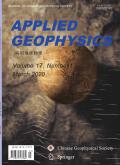Spatio-temporal distribution of earthquake occurrence in Eastern Himalaya and vicinity (26°N–31°N and 87°E–98°E) based on b-value and fractal dimension
Abstract
This study investigates the spatial and temporal variation of fractal dimension and b-value for the eastern part of the Himalaya and adjoining area (26°N–31°N and 87°E–98°E). The analysis is carried out on the earthquake dataset of 1373 events (Mc = 4.0) by sliding window technique for the period 1964 to 2020. The region is divided into three sub regions A (87°E–92°E), B (92°E–94°E) and C (94°E–98°E). The b-value computed for the region A comprising eastern Nepal is smaller compared to other two regions which infers the possible high stress and asperities in the region. High spatial fractal dimension (Dc > 1.5) and low temporal fractal dimension (Dt < 0.31) are computed for the regions. High spatial fractal dimension may indicate that fractures generating earthquakes are approaching a 2D structure and low temporal fractal dimension implies high clustering of earthquake’s epicenters. The b value shows a weak negative correlation with Dc for regions A and C while a weak positive correlation is observed for the region B. Based on b-value and fractal dimension, this study explains the frequency of earthquakes and heterogeneity of the seismogenic structure in this part of the Himalaya.

 求助内容:
求助内容: 应助结果提醒方式:
应助结果提醒方式:


